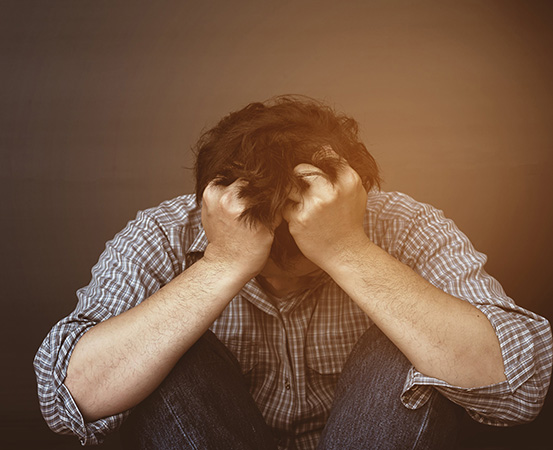
Anirudh Banerjee, a Bengaluru-based software developer, refreshes his memory from when he struggled with depression four years ago. “I was so out of place at that time. I was drinking more often and used to get these anger outbursts,” he says. He felt lonely and misunderstood as his relationships took a beating. “The fact that I might have depression never crossed my mind until my GP pointed it out to me and asked me to seek help,” he recalls. Banerjee’s story resonates with many.
A 2017 World Health Organisation (WHO) report estimates that 322 million people are living with depression, of which 3.6% are men, accounting for 115.9 million men globally.
Understanding depression in men
Depression is a serious mood disorder that is characterised by feelings of sadness and loss of interest in activities one once enjoyed. Although women are more likely to be diagnosed with depression, men are five times more likely to commit suicide in India than women in the age group of 45-60, says a National Crimes Records Bureau (NCRB) report. This hints towards the possibility that men have undiagnosed mental health issues. Research suggests this happens because the signs and symptoms of the disorder are different in men and women.
To understand them better, let us divide this section into behavioural, emotional, and physical signs of depression in men.
Behavioural signs and symptoms
According to a 2013 study by Lisa A Martin on the experience of symptoms of depression in men and women, men are more likely than women to display anger attacks and risk-taking behaviour, both in western and most non-western countries. The study explains that these behavioural symptoms may be an attempt to mask their depression to fit the social “masculine” norm.
Men with depression may display the following behaviours
- More substance use – alcohol or drugs
- Avoidance behaviour
- Obsessively hooked on work
- Engaging in risk-taking behaviour
- Engaging in self-destructive behaviour
- Decreased libido
Emotional signs and symptoms
Changes in an emotional state mark depression. Women who have depression express this most often as sadness, however, changes in men’s emotional state become visible in other ways.
Men with depression often display the following emotional signs
- Anger
- Frustration
- Irritability
- Aggression
- Detachment
This major difference may be because of the societal expectation of how men express themselves. The study also highlights how men conceal emotions of sadness due to the fear of being criticised or judged by others.
Physical signs and symptoms
Depression also has somatic symptoms, and men with depression may experience a few of the following physical symptoms:
- Headaches
- Body pain
- Tightness in the chest
- Weight loss or weight gain
- Changes in sleeping pattern
- Change in appetite
- Fatigue
Why does depression go unnoticed in men?
“There is an Indian societal expectation out of men that their role is to earn money and take care of the family. Their upbringing is such that they must be tough and strong. They can’t be perceived as weak which many consider depression to be,” says CR Satish Kumar, a consultant clinical psychologist practising at Manipal Hospitals in Bengaluru.
This may also be due to the widespread use of generic diagnostic criteria that are not sensitive to depression in men. Studies that use traditional scales have found that depression is more common in women than in men. However, Lisa A Martin’s study found no significant difference between the rate of depression in men and in women when they considered alternative depressive symptoms. This study suggests that the traditional diagnostic criteria may not be representative of the population of men with depression and that may be a reason it goes unnoticed.
In their paper Gendered Manifestations of Depression and Help-Seeking Among Men, that is specific to the American population, Call and Shafer say that depression goes unnoticed in men because they often do not seek mental health care help from professionals, which then leads to underdiagnosis of depression in this population.
Effects of this negligence on men’s health
“Most of the time men mask their depression using various means. Untreated depression also leads to severe physical disorders such as fibromyalgia, and functional and other psychosomatic disorders. Doctors, after assessment very clearly say that this is to do with psychogenic factors,” says Satish.
The negligence also leads to a lack of support system making men feel like they do not have anyone to reach out to; it also makes them feel isolated, lonely, and misunderstood leading to poor quality of life.
For effective diagnosis and timely treatment, it is important to incorporate symptoms of depression specific to men into the diagnostic criteria. Moreover, it is important to encourage men to acknowledge and release negative emotions, rather than mask them.
Note: If you or someone you know is in crisis, there is help available. Call your local emergency number or contact AASRA – 9820466726


















One Response
constantly i used to ead smaller articles whic as wel clear theiir motive,
andd that iss alsxo happening wjth this paragraph which I
aam eading now.